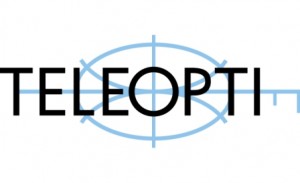Count to 5 for perfect multi-channel forecasting in your contact centre – Keep it simple, that’s the message from Nick Brook of Teleopti when it comes to forecasting for multi-channel. Here are his top five tips.

Five top tips for successful multi-channel forecasting
It’s about a robust forecasting process and for the best results follow this five-step approach:
1. Unleash the power of the past
Understanding and validating historical data is critical, whatever the channel. Modern workforce management (WFM) solutions capture huge amounts of data to create a library of valuable information. Use it to spot deviations from normal events such as unexpected spikes in call volumes or even different average handling time (AHT) patterns. The first step to creating meaningful forecasts is to eliminate these ‘out of the ordinary’ events and focus on what usually happens during typical demand periods in all channels.
2. Flatten the spikes
The next step is to revisit the ‘out of the ordinary’ events that can adversely impact the efficiency of the contact center such as systems outages, negative comments on social media or news in the press. WFM technology helps to flatten the common spikes in demand. For example known “outliers” such as Christmas and Black Friday, which happen every year but on a different date can be made ‘special events’. Planners and forecasters simply tap into the powerful integration capabilities of automated WFM solutions to gather accurate data from diary and CRM applications in real-time and pinpoint these special events easily and quickly.
3. Validate long-term forecasts to identify trends
WFM solutions flag up trends based on historical data, which planners can choose to acknowledge or they can generate new forecasts by month, week or by the day. These forecasts should be based on knowledge of upcoming activities such as new marketing campaigns or future changes in business operations. To introduce a new channel rather than second-guessing what’s required, simply use historical data from well-established similar channel types to make sound forecasting decisions.
4. Drill down to the detail
Once you’ve created longer-term forecasts concentrate on daily forecasting to support flexible planning on the go. Intra-day scheduling allows planners to reschedule the contact center workforce during the day based on fluctuating arrival patterns for all types of enquiry and all channels while factoring in shrinkage ie events that take agents away from the frontline such as unexpected sickness, time off, ad-hoc breaks or training. What is more, planners can be confident that service levels are met because WFM ensures the right people are skilled and scheduled to handle the calls and tasks needed to achieve this.
5. Build readiness into schedules
Always be prepared for the unexpected such as weather conditions that prevent agents from getting to the office or major systems outages. Remember to incorporate buffers to allow for unexpected spikes in activity and unplanned absences. The latest forecasting technology enables planners to conduct ‘what if’ scenarios for all possible eventualities across all channels, making WFM a strategic forecasting tool and an intrinsic part of business continuity planning.
Finally, don’t cut corners!
With pressure on to do more with less and still deliver an exceptional customer experience, it’s tempting to cut a few corners. This is a fatal mistake and can unravel all the good work you’ve achieved. A few simple housekeeping rules like keeping records of previous forecasts, building both operational and business changes into forecasts, networking with other parts of the organisation consistently and on a regular basis will make all the difference. You’ll be rewarded with better contact center performance and customer satisfaction on all channels, all year round.
Additional Information
Nick Brook is a Project Manager and Consultant at Teleopti
Want to dig deeper into forecasting? Download our white paper Tips and techniques for accurate effective forecasting
Teleopti, is a global provider of workforce management (WFM) software, offering a WFM solution that is sophisticated, localised and easy to use. As the largest “best-of-breed” vendor, Teleopti focuses on helping contact centres, back offices and retail stores improve customer service, employee satisfaction and profitability – through optimized, automated forecasting and scheduling.

Founded in 1992, Swedish-established Teleopti has customers in over 80 countries, numerous offices around the world – from Beijing to São Paolo – and a comprehensive global network of partners. With a record of continuous net profitability for over 20 years and with high customer satisfaction ratings, Teleopti serves as a reliable partner.
For additional information on Teleopti visit their Website or view their Company Profile






